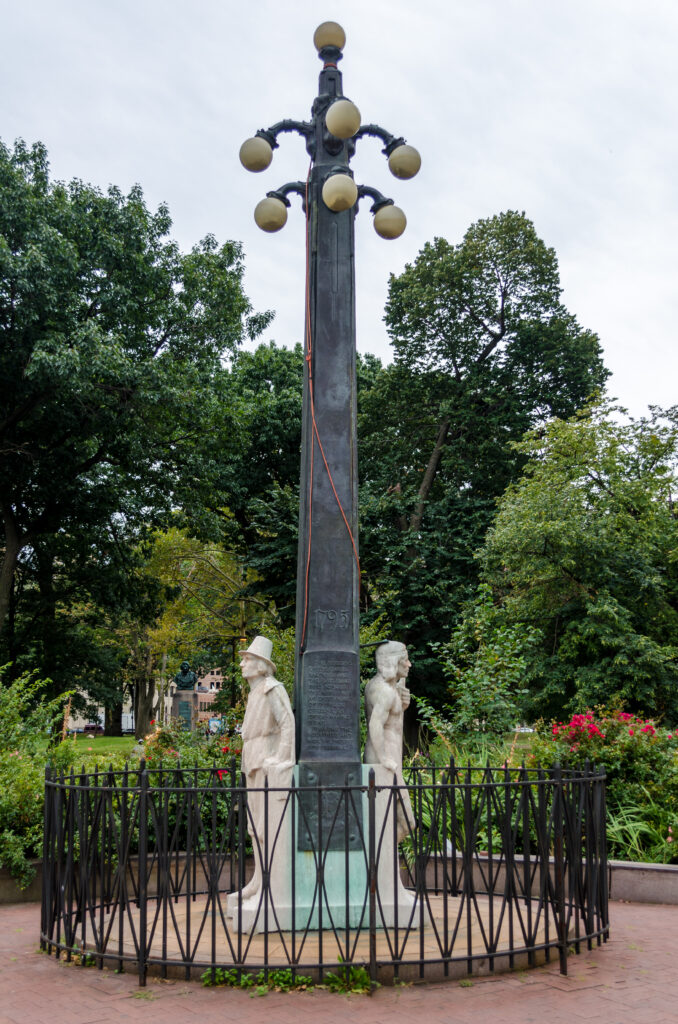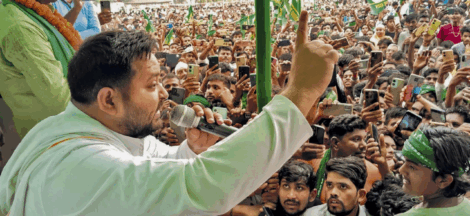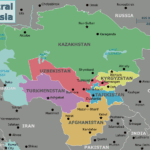A chilling episode at Newark Liberty International Airport has ignited global concern after footage showed an Indian student being handcuffed, shackled and pinned face-down by at least four US officials—two with their knees on his back—before being deported. An Indian‑American observer, entrepreneur Kunal Jain, captured the distressing scene and shared it on X, describing how the young man was “crying, treated like a criminal” and bound at both wrists and ankles.
The student, apparently disoriented, is heard pleading in Hindi and a Haryanvi dialect: “Main pagal nahi hu… yeh log mujhe pagal sabit kar rahe hai”. According to Jain, language barriers deepened the crisis: the student spoke in his native dialect, while the officers, he said, did not comprehend Hindi. Efforts by Jain to assist were rebuffed, and he claims the student’s behaviour was labelled “violent” and deemed a threat to other passengers.
Jain, who was scheduled to board the same flight, expressed his shock: “He came chasing dreams, not causing harm. As an NRI, I felt helpless and heartbroken. This is a human tragedy”. He emphasised that there were around fifty people in the queue, yet no one challenged the authorities’ handling of the situation. He also warned of a disturbing trend: “Every day 3–4 such cases are happening. There have been more such cases in the last few days”.
The Indian Consulate in New York responded swiftly, stating it was “in touch with local authorities regarding the incident” and reaffirming its commitment to the welfare of Indian nationals. The consulate emphasised that it had “come across social media posts claiming that an Indian national is facing difficulties at Newark Liberty International Airport”, adding: “The Consulate remains ever committed for the welfare of Indian Nationals”.
Despite growing public outrage, US authorities, including the Port Authority Police Department, have not issued any official account or confirmed the student’s status or the precise circumstances. A spokesperson for the PAPD claimed they are not involved in deportation procedures.
This incident has drawn stark comparisons to a wave of deportations early in 2025, when over 100 Indians were removed from the US amid immigration policy crackdowns, prompting sharp criticism in India regarding the perceived inhumane treatment of deportees—including shackling and forced removal scenes. Opposition voices at that time vigorously condemned the lack of diplomatic intervention and the absence of alternative repatriation arrangements for affected individuals.
Civil rights advocates stress that due process must prevail. They argue that restraint should be proportional and justified, and stress the importance of preserving the dignity of detainees. A legal expert familiar with deportation protocols emphasises that use of force must follow strict guidelines, typically requiring clear evidence that a detainee poses a threat or exhibits violent behaviour. Experts warn that public restraint not only risks violating rights, it can inflict long-lasting psychological trauma.
Amid accusations of a broader pattern, activists highlight the linguistic and cultural chasms international students face at US airports. Difficulty communicating under distress, coupled with rigid enforcement practices, can spiral into traumatic encounters—especially when students appear confused or distressed. The incident serves as a stark reminder of how procedural insensitivity can rapidly escalate situations with grave personal consequences.
Jain has urged comprehensive action: an inquiry should explore the student’s treatment, whether less coercive measures were available, and whether officers followed established protocols. He also wants assurance that the student—and others in similar circumstances—receive immediate consular access, medical evaluation and mental health support. He insists transparency about visa denial reasons is essential to prevent recurrence of such distressing confrontations.
Diplomatic channels appear active. The Ministry of External Affairs in New Delhi and the US Embassy in New Delhi have not issued formal statements, but sources suggest the Indian consulate is pressing US authorities for a detailed incident report, including video footage, log entries, and medical assessments. Reports indicate the deportation may have occurred on 7 June, with video surfaced early on 8 June.
The public protest is notable. On social media, reactions span shock, condemnation, scepticism, and questions about whether the removal was lawful. Some users questioned if proper procedure was followed, while others defended law enforcement. The Digital Diplomacy Network emphasised that consular oversight is vital when citizens face forced removal abroad.
The episode speaks to wider anxieties about global student mobility. With more than 200,000 Indians currently studying in the US, and annual flows exceeding 50,000 visa recipients, such incidents risk undermining confidence in the appeal and fairness of US higher education. Universities and student bodies are watching closely; several have begun exploring emergency contact structures, legal aid and orientation programs to better prepare students for such scenarios.
Congressional attention is also mounting. Senior lawmakers in the US House are reportedly reviewing immigration enforcement practices, particularly concerning treatment of visa holders in transit zones. They are expected to press for improved use‑of‑force safeguards and consular notification procedures. A bipartisan proposal under discussion seeks to mandate real‑time notification of consular officers and third‑party observers when non‑citizens are detained and at risk of deportation.
Flights from the US to India have seen an uptick in deportation charters since 2024, along with growing concern in academic and immigrant communities. The Newark incident may now become a focal point in broader efforts to reform deportation practices. It raises difficult questions: How can students be better protected? How can law enforcement ensure safety while upholding rights?
The image of a young man pinned down, legs bound and pleading in his mother tongue, is haunting. It captures a moment of crisis that transcends borders and raises questions about the balance between immigration enforcement and human dignity. As the Indian consulate seeks answers, pressure is mounting on both governments to ensure that public deportations do not become spectacles of unnecessary force.




 Washington’s Geostrategic Gamble Over Islamabad
Washington’s Geostrategic Gamble Over Islamabad 